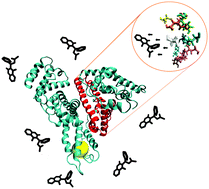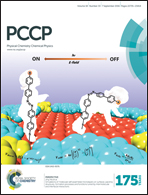Probing the Sudlow binding site with warfarin: how does gold nanocluster growth alter human serum albumin?
Abstract
The search for new fluorescent molecules is vital to the advancement of molecular imaging and sensing for the benefit of medical and biological studies. One such class of new fluorescent molecule is fluorescent gold nanoclusters encapsulated in Human Serum Albumin (HSA-AuNC). In order to use this new fluorescent molecule as a sensor or fluorescent marker in biological imaging both in vitro and in vivo it is important to understand whether/how the proteins function is changed by the synthesis and presence of the gold nanoclusters inside the protein. Natural HSA acts as the main drug carrier in the blood stream, carrying a multitude of molecules in two major binding sites (Sudlow I and II). To test the effects of gold on the ability of HSA to act as a drug carrier we employed warfarin, an anticoagulant drug, as a fluorescent probe to detect changes between natural HSA and HSA-AuNCs. AuNCs are found to inhibit the take up of warfarin by HSA. Evidence for this is found from fluorescence spectral and lifetime measurements. Interestingly, the presence of warfarin bound to HSA also inhibits the formation of gold nanoclusters within protein. This research provides valuable insight into how protein function can change upon synthesis of AuNCs and how that will affect their use as a fluorescent probe.


 Please wait while we load your content...
Please wait while we load your content...